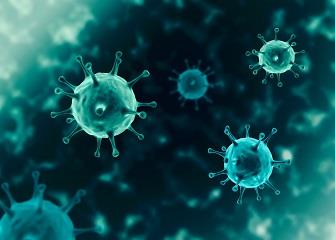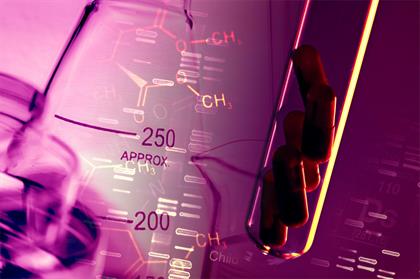
Microbial Fermentation Synthesis
Traditional methods for ergothioneine production involve extracting mycelium from natural ergot fungi, but this approach is costly and yields are unstable. In recent years, with the continuous development of microbial fermentation technology, utilizing mycelium fermentation for ergothioneine synthesis has become a cost-effective and efficient production method.
Ergothioneine, with its biological activities such as antioxidant and anti-inflammatory properties, finds extensive applications in fields like food, pharmaceuticals, and cosmetics. Fermentation CDMO can develop active metabolites, such as ergothioneine, with commercial production feasibility according to customer specifications. Contract fermentation services typically encompass process design, process scale-up, confirmation of chemical structure or components, studies on quality and stability, impurity research, and customized production. Upon completion of the process development and production phases, the resulting ergothioneine or other final products are delivered to the customer.
Strain Selection and Improvement
Common molds found on grains, such as Fusarium Sporotrichioide and Fusarium graminearum, are the main strains used for ergothioneine synthesis. To enhance ergothioneine yield and purity, strains need to be selected and improved based on criteria such as growth rate during fermentation and ergothioneine production and purity. Improvements can be achieved through methods like mutagenesis and genetic recombination to further increase ergothioneine yield and purity.
Seed Liquid Preparation
Seed liquid is a mycelium suspension used for inoculation in fermentation tanks. When preparing the seed liquid, appropriate culture medium components and inoculation volumes need to be selected, and factors such as cultivation time and temperature controlled. Seed liquid is usually prepared using shake-flask cultivation or solid-state cultivation, with shake-flask cultivation providing better mixing efficiency and oxygen transfer, promoting mycelium growth and ergothioneine synthesis.
Mycelium Cultivation in Fermentation Tanks
Fermentation tanks are used for large-scale mycelium cultivation, and the type, size, and material of the tank can influence the fermentation process and ergothioneine yield. When cultivating mycelium in fermentation tanks, it is essential to control process parameters such as suitable aeration, stirring speed, and pressure to provide an optimal fermentation environment. Monitoring parameters like pH, temperature, and dissolved oxygen levels during fermentation and making timely adjustments ensure normal mycelium growth and ergothioneine synthesis.
Ergothioneine Biosynthesis
The biological synthesis pathways of ergothioneine include two aerobic pathways (catalyzed by EgtB-EgtC-EgtE in actinobacteria and Egt1-Egt2 in fungi) and one anaerobic pathway (catalyzed by EanB in sulfur bacteria). Specifically, in the aerobic pathway, the non-heme iron enzyme EgtB or Egt1 utilizes oxygen molecules as oxidants to catalyze the activation of the ε-position Csp2-H bond of Hercynine. In the anaerobic pathway, cysteine desulfurase EanB directly catalyzes the generation of the C-S bond by activating the ε-position Csp2-H bond. In this process, cysteine (Cys) may serve as the sulfur source, and IscS acts as the mediator for sulfur transfer.
The synthesis of ergothioneine is completed during the mycelium fermentation process. Under suitable reaction conditions, by controlling factors such as reactant concentrations, reaction time, and temperature, the synthesis of ergothioneine in the mycelium can be promoted. During this process, attention should be given to avoiding the generation of other by-products to enhance the purity and yield of ergothioneine.
Product Purification
Extracting and purifying ergothioneine from the fermentation broth is one of the critical steps in the entire process. Common purification methods include centrifugation, precipitation, and extraction. These methods help remove most impurities, improving the purity of ergothioneine. During the purification process, selecting suitable processes and separation methods based on the properties of ergothioneine and impurities ensures the purity and yield of ergothioneine.
Biological Functions of Ergothioneine
Antioxidant Activity
Ergothioneine is an efficient scavenger of singlet oxygen, superoxide radicals, hydrogen peroxide, lipid peroxides, nitric oxide derivatives, and hydroxyl radicals. Ergothioneine chelates various divalent metal cations such as Cu2+, Hg2+, Zn2+, Cd2+, Fe2+, Ni2+, forming redox-inactive complexes, preventing these metal ions from participating in reactive oxygen species generation. Ergothioneine can regulate the antioxidant enzyme system, activating enzymes such as glutathione peroxidase, superoxide dismutase, and catalase, maintaining the ratio of reduced to oxidized glutathione.
Anti-Inflammatory Activity
Ergothioneine effectively inhibits the activation of the NF-κB gene signaling pathway, slowing the release of inflammatory factors such as IL-8β. It also suppresses the expression of genes like IL-8β and IL-6β, mitigating inflammatory reactions. Ergothioneine dose-dependently inhibits the synthesis of pro-inflammatory cytokines IL-6 and IL-8 and prevents cell death by inhibiting the expression of pro-apoptotic factors Bax and caspase-3. Ergothioneine significantly reduces lung and intestinal ischemia-reperfusion injury by lowering serum levels of IL-1β and TNF-α.
Neuroprotective Activity
Ergothioneine promotes the differentiation of neural stem cells, inhibits β-amyloid accumulation or brain damage caused by D-galactose, and mitigates mitochondrial dysfunction in nerve cells, protecting against neuronal damage. The accumulation of ergothioneine in the brain contributes to reducing oxidative stress and neuroinflammation, potentially alleviating signs or symptoms of neurological disorders.
Applications of Ergothioneine
Due to its antioxidant and anti-inflammatory activities, ergothioneine can inhibit various diseases caused by oxidative damage, such as heart disease, muscle pain, and premature aging. The existence of ergothioneine transporters makes it superior to glutathione in certain aspects, leading to potential treatments for autoimmune conditions.
Ergothioneine can be used as a dietary supplement in food. Due to its antioxidant properties and metal ion chelation ability, ergothioneine can be used as an additive in food, beverages, and pharmaceuticals. Compared to vitamin C (ascorbic acid), Ergothioneine exhibits better heat and pH stability.
Transporters for ergothioneine are expressed in epidermal cells, fibroblasts, and melanocytes. Ergothioneine can be absorbed and accumulated in these cells. It has an absorption wavelength in the ultraviolet range similar to DNA, effectively protecting against cell damage caused by ultraviolet radiation. Ergothioneine presents broad prospects for application in the cosmetics industry for purposes such as skin whitening, wrinkle reduction, anti-aging, and acne removal.
Leave a Reply
Related Products
You Might Like Also

Lipids Used in COVID-19 mRNA Vaccines
The COVID-19 pandemic has killed millions of people. Vaccines certainly are the most outstanding ways to prevent major diseases and death, though they haven't eliminated infections. At present, the most effective vaccine is the mRNA vaccine developed by Pfizer-BioNTech and Moderna. Before that, mRNA technology stopped in the lab phase. Read More

Mechanism of Action of Paclitaxel
Paclitaxel is a natural anticancer drug with the molecular formula C47H51NO14. It has been widely used in the clinical treatment of breast cancer, ovarian cancer, and certain head and neck cancers, as well as lung cancer. Its novel and complex chemical structure, extensive and significant biological activity, unique mechanism of action, and scarce natural resources have gained immense favor among botanists, chemists, pharmacologists, and molecular biologists, making it a prominent anticancer star and research focus in the latter half of the 20th century. Read More

Fermented Raw Material for Cosmetic Skincare Product
The cosmetics and skincare industry is constantly evolving and a recent trend that has emerged is the use of fermented ingredients in skincare products. Fermentation is a microbial metabolic process that has been used for centuries in food and beverage production, and now it has been extended to the cosmetic industry. Read More

Hypoglycemic Functional Factors in Natural Products and Their Mechanisms of Action
Diabetes is a common clinical disease, and with the improvement of living standards, an increase in the number of obese people, and the intensification of aging populations, the incidence of diabetes is increasing year by year. Read More

Nanobodies Definition, Structure, Advantages and Applications
Nanobodies are the smallest functional single-domain antibodies known to be able to stably bind to antigens, and have unique structural and functional advantages. The molecular weight of nanobodies is only 12-15 kDa, which retains the antigen binding ability of traditional antibodies. However, nanobodies have higher solubility and stability, and have unique advantages in biological function and biochemical characteristics. Therefore, nanobodies have shown good control effects in disease diagnosis, cancer and infectious diseases. Read More

New Technology to Promote Drug Development-AI Technology
For a long time, the research and development of each new drug has faced the challenges of high cost and long cycle. In response to these challenges, major pharmaceutical companies have shifted from targeting common diseases to developing drugs for specific diseases. At the same time, these companies are constantly looking for new technologies for new drug development, such as high-throughput screening technology, DNA encoded chemical library, computer-aided drug discovery, and artificial intelligence. Read More










